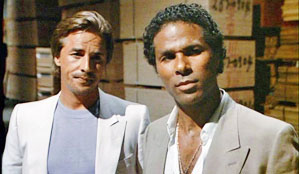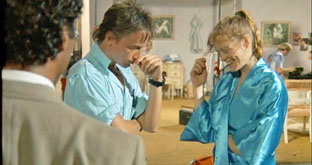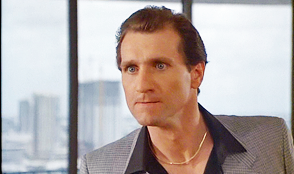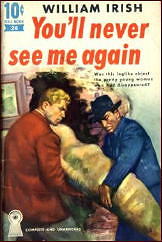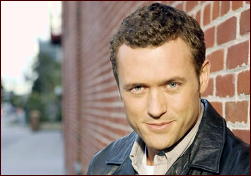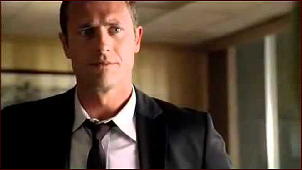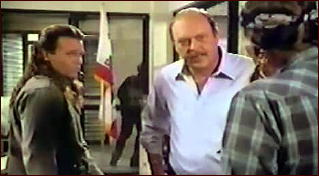Wed 25 May 2016
COMING SOON – THE TV EDITION, by Michael Shonk.
Posted by Steve under TV Adventure , TV Espionage & Spies , TV Horror , TV mysteries , TV Science Fiction & Fantasy , TV Westerns[25] Comments
by Michael Shonk
Most TV junkies claim Fall premiere week as their favorite time of the year, but mine has always been the May upfronts. Upfronts are parties the networks throw for major advertisers, ad agencies and the media in attempt to get them drunk enough to believe next Fall’s TV series will be the best ever and hope they forget the lies the networks told about the quality of last season’s shows.
In the past, May was the most dramatic month for the TV fanatic. TV viewers embraced hope of the new, relief when their favorites survived, and the devastation when they didn’t. But it is just not the same anymore.
The broadcast networks (ABC, CBS, FOX, NBC, and CW) have joined cable networks in the effort to supply original programming all year round. New television series never stop coming. The Big Four and-a-Half networks just announced their fall lineup with huge fan fare ignoring that September is no longer the best month of TV.
Pushing the limits of space here, let’s check out the highlights of what is coming this week, this Summer, this Fall, and in 2017.
Just because the main season is over, it doesn’t mean the broadcast networks abandon original programming. WAYWARD PINES is back on FOX. CW has the final season of BEAUTY & THE BEAST. CBS has the return of ZOO and two new series starting in June that sound better than any of CBS new fall shows. AMERICAN GOTHIC tells the story of a family that has discovered one of them is a serial killer. From the creators of THE GOOD WIFE, BRAINDEAD is a comedy thriller about a young woman who discovers aliens are eating the brains of politicians and government workers. NBC has the Olympics this summer but also airs AQUARIUS.
NBC medical drama NIGHT SHIFT returns for its third season:
Cable networks offer original scripted programs in May and June including AMC’s new crime drama set in a restaurant, FEED THE BEAST, and the last season of HELL ON WHEELS, HBO’s GAME OF THRONES, TNT’s LAST SHIP, MAJOR CRIMES, MURDER IN THE FIRST, and RIZZOLI & ISLES (final season), TBS’s ANGIE TRIBECA, Cinemax’s OUTCAST, Netflix’s ORANGE IS THE NEW BLACK, ADULT SWIM’s DECKER: UNCLASSIFIED, and SYFY’s 12 MONKEYS.
The heck with Marvel and DC, give me an IDW comic book like the fun horror/western WYNONNA EARP.
Cable original scripted programs continue through the summer with returning series such as SYFY’s KILLJOYS and DARK MATTER, FX’s TYRANT and THE STRAIN, STARZ’s POWER, USA’s SUITS and last year’s hit MR. ROBOT.
New series include Netflix’s STRANGER THINGS set in the 1980s, a supernatural series centered on a missing boy, SYFY’s post-apocalyptic drama AFTERMATH, and TNT’s GOOD BEHAVIOR based on the Letty Dobesh books by Blake Crouch.
Based on Stephen Hunter’s book POINT OF IMPACT, USA network new series SHOOTER premieres in July.
This fall live television, especially sports such as the NFL and World Series, will distract the viewing public. Cable lead by one of the most watched TV series in all television, AMC’s WALKING DEAD will hold its own. TNT reboots TALES FROM THE CRYPT, this time from M. Night Shyamalan.
Netflix starts another series featuring a Marvel comic character – LUKE CAGE.
Midseason 2017 promises to offer some entertaining new series on cable networks. USA’s FALLING WATER is a supernatural thriller about three strangers who find they can share dreams. SYFY’s horror anthology CHANNEL ZERO,
Syfy’s THE EXPANSE, the best TV series I watched in 2015-16, will return for its second season in January 2017.
Top network CBS will add three new dramas this Fall. BULL starring NCIS Michael Weatherly as Dr Phil back when he was a consultant specializing in manipulating… uh, I mean analyzing juries. Medicine meets technology in the new drama PURE GENUIS.
The pilot of MACGYVER had many behind the scenes problems. Let’s hope Macgyver can find the right knick knack to save the show.
Two new CBS series wait for their turn and midseason. DOUBT a lawyer show starring Katherine Heigl, and TRAINING DAY, based on the film. But more important are two series that CBS hopes to premiere in 2017 on CBS ALL ACCESS, its streaming service. First original new series will be the sequel to THE GOOD WIFE. The second is perhaps TV most famous franchise in history. It began on NBC, cancelled and resurfaces as a successful film series. It was used to establish Paramount in the syndicated market. It began UPN (now CW) and tried to save the network before the merger with WB. As Paramount continues to pump out theatrical films, CBS will use STAR TREK to jumpstart its streaming service.
Without a title or any idea what it is about, the new STAR TREK series is the most anticiated television series of next season.
Among the CBS series returning in the fall are BLUE BLOODS, CODE BLACK, CRIMINAL MINDS, ELEMENTARY, HAWAII FIVE-O, MADAM SECRETARY, NCIS, NCIS: LOS ANGELES, NCIS: NEW ORLEANS, and SCORPION. While CRIMINAL MINDS – BEYOND BORDERS will be back in 2017.
SUPERGIRL reminded CBS what its TV audience likes, so the new shows look like the old shows and SUPERGIRL flew off to CBS little sister CW. The comic book superhero will feel comfortable with the rest of DC comic superheroes, ARROW, LEGENDS OF TOMORROW, and CW’s top show FLASH. CW continues to specialize in comic books, horror and the weird.
New this fall to the mini-me of broadcast networks is FREQUENCY based on the film.
Returning during midseason will be THE 100, iZOMBIE, THE ORIGINALS, SUPERNATURAL, and THE VAMPIRE DIARIES.
Midseason, CW will add FOX reject RIVERDALE, based on the characters from Archie comics focused on a murder mystery. But this is not Scooby Doo or your old Archie (even the comic books are not your old Archie), this Archie deals with “adult issues†such as him sleeping with his teacher.
While CBS remains the top network, NBC is close behind. Its two biggest hits are SUNDAY NIGHT FOOTBALL and THE VOICE, each hogging up much of NBC’s fall schedule. This fall NBC adds five games of Thursday night football (CBS shows the first five, NBC has the last five). Without any major holes in its fall schedule, NBC saved its most promising new series for midseason, adding only three to the fall lineup.
NBC’s only new drama this fall is TIMELESS, the most promising series of the many this season featuring time travel.
Some of the series returning this fall are BLACKLIST, BLINDSPOT, CHICAGO FIRE, CHICAGO MED, CHICAGO PD, GRIMM, LAW AND ORDER SVU. SHADES OF BLUE will have to wait for SUNDAY NIGHT FOOTBALL to end.
Other new shows waiting for their turn include comedies POWERLESS (insurance office comedy set in the world of superheroes), TRAIL & ERROR (court comedy). New dramas are BLACKLIST – REDEMPTION (spinoff), EMERALD CITY (based on Baum’s Land of Oz books), MIDNIGHT, TEXAS (based on a series of books by Charlaine Harris (TRUE BLOOD)), TAKEN (prequel to film series) and what would any NBC list be without another Dick Wolf CHICAGO series, in this case CHICAGO JUSTICE.
There is hope at FOX. This year they have the Super Bowl guaranteeing better numbers at the end of the season. Ratings are changing, and FOX is pushing the hardest to find a way to count those of us who no longer watch TV live or on a TV set.
TV is about to enter an era of MONEYBALL. For those not familiar with baseball or the movie or the book, sabermetrics uses an endless amount of numbers to measure performance. Networks like FOX are all ready there, someday the media will catch up.
Speaking of baseball, FOX will have the World Series this fall as well as new series PITCH (story of first woman to play in Major League Baseball). Other new series of interest coming this fall are THE EXORIST (based on William Blatty’s novel), and LETHAL WEAPON (based on the film).
My pick for first fall show cancelled is FOX’s SON OF ZORN, an animated barbarian tries to cope in live action modern world.
Shows returning in fall include BROOKLYN NINE-NINE, insane GOTHAM, LUCIFER, ROSEWOOD, SCREAM QUEENS, and QUINTCO. Series returning in midseason include SLEEPY HOLLOW and the final season of BONES.
Among the new series waiting for 2017 are APB (rich man buys a police precinct), MAKING HISTORY (time travel comedy), SHOTS FIRED (racially charged shooting involving a cop), and PRISON BREAK (sequel to 2005 TV series).
FOX is hoping 24 – LEGACY will be as successful as the original 24.
ABC did not have a good year. Its president of programming was sacrificed to the Nielsen Ratings Gods in prayers for better numbers in the demo.There was not enough time to change the fall offerings, but it is expected ABC will copy CBS and NBC with less soap operas and more procedurals.
ABC’s new fall dramas of interest to us begins with DESIGNATED SURVIVOR starring Kiefer Sutherland as Tom Kirkman, Secretary of Housing and Urban Development ends up President after a terrorist attack takes out most of the leaders of the American government. CONVICTION with Hayley Atwell (AGENT CARTER) as a spoiled former first daughter who is forced under threat of jail to lead a small group investigating cases where the convicted might be innocent.
NOTORIOUS is about the seduction between law and the media.
Returning this fall are HOW TO GET AWAY WITH MURDER, MARVEL’S AGENTS OF S.H.I.E.L.D., and ONCE UPON A TIME. While these returning series have to wait until midseason their turn – AMERICAN CRIME, THE CATCH, SCANDAL and SECRETS & LIES.
Among the new ABC shows waiting for midseason is TIME AFTER TIME, based on the movie and stars Freddie Stroma as H.G. Wells.
Over one hundred TV series in the 2015-16 season were cancelled or ended. RIP.
